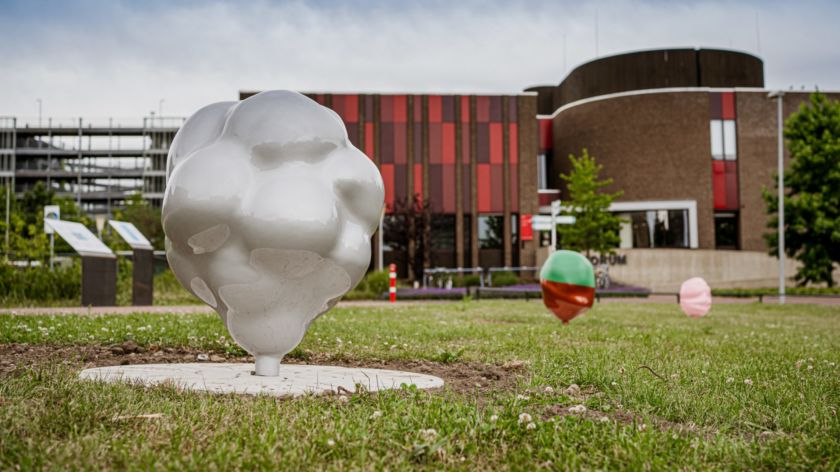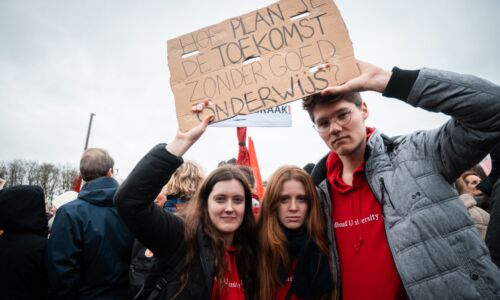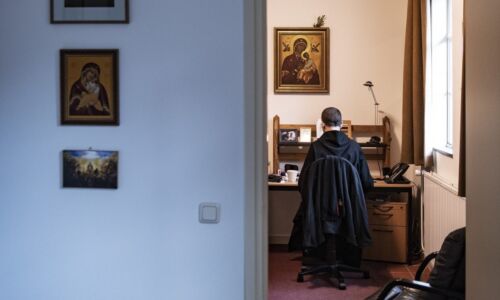Nine colourful spheres in honour of the patient kitchen at Radboudumc
-
 The artwork 'Dessert'. Photo: Johannes Fiebig
The artwork 'Dessert'. Photo: Johannes Fiebig
Nine coloured spheres have recently been placed next to the Radboudumc's east entrance. They are abstract bonbons and cream puffs, part of the artwork 'Dessert', a tribute to the patient kitchen of the hospital.
Anyone walking along the Heyendaalseweg past the Radboudumc will see nine coloured spherical objects since last week. White-brown, orange-blue, yellow-pink: several colour combinations pass by. Mushrooms? Chairs? No, they’re supposed to represent desserts. Cream puffs, whipped cream, bonbons, a few dipped in a glaze – but abstract.
The artwork, created by Hester Oerlemans, is a tribute to the former central patient kitchen of the Radboudumc, which closed in 2016. For 48 years, the kitchen was used to cook for all the hospital’s patients. Today, each department has its own kitchen.
Underground
When the former kitchen was demolished in 2020, former employees asked for a commemorative bench, art coordinator Let Geerling explains. ‘In the end, it grew into a whole art project.’
‘The artwork is an ode to all employees who have worked there since 1968′, Geerling continues. ‘After all, for almost 50 years they cooked meals for the hospital’s patients every day, but were invisible to the outside world.’ That can be taken literally: the kitchen was under the ground.
Oerlemans spoke to some former employees about their work. ‘Their love for cooking was so apparent that I had to do something with it’, she says. ‘I wanted to serve one last meal with my artwork, on the site of where the kitchen used to be.’
Homemade desserts
That became the nine spheres, inspired by the homemade desserts that were made in the cellar. The artist did not have to think long about the name of the artwork, Toetjes (in English: Dessert). In the plateaus on which the abstract delicacies are placed, kitchen utensils and other foods have been worked into the embossing. The lawn should be seen as a tablecloth on which everything is served.
Yet not all the desserts are equally recognisable. That is intentional, Oerlemans explains. ‘There are some more recognisable forms, but also some abstract ones. It shouldn’t be too recognisable, people should be able to fill in for themselves what they see in a sculpture.’
Information boards have also been placed near the artwork, with stories from former employees. These can also be found online (in Dutch) on the website of the Radboudumc.



